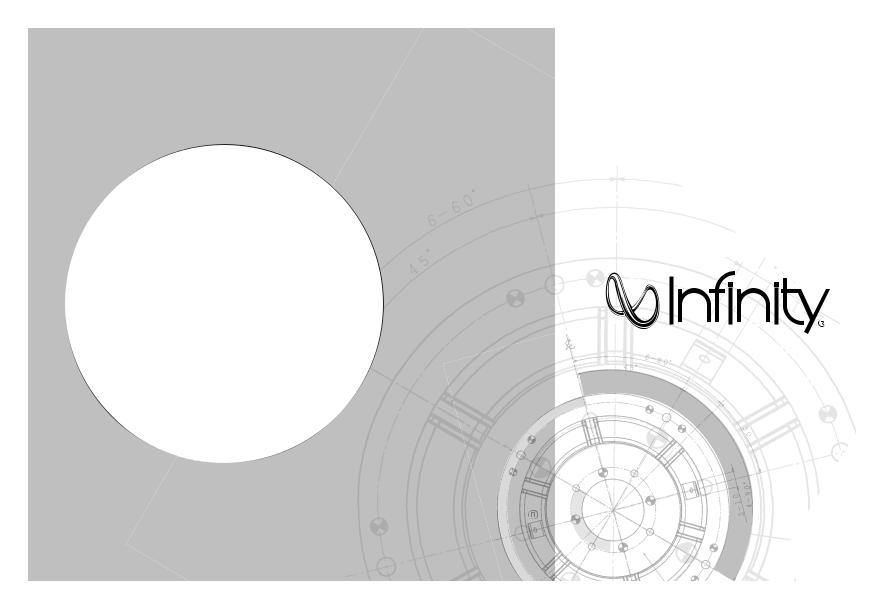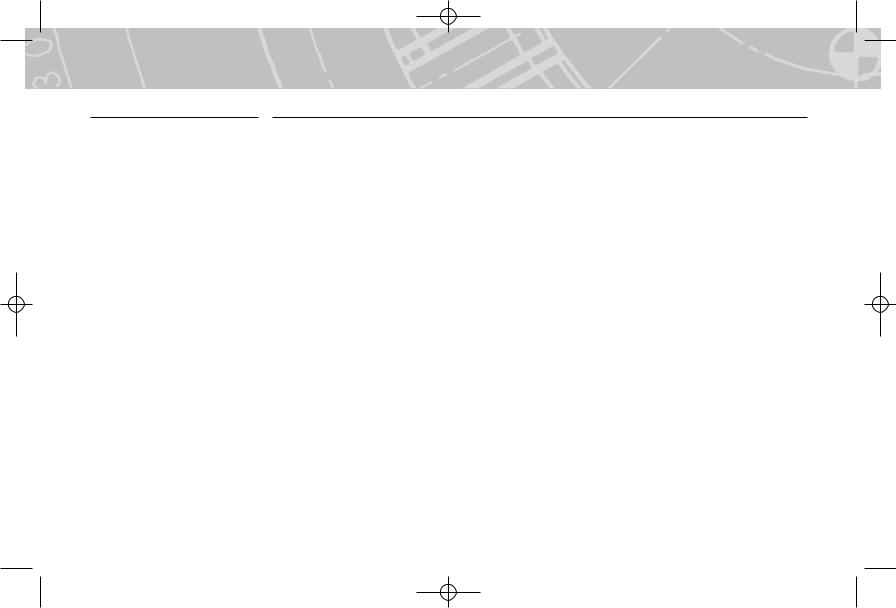Infinity 102.7W, 104.7W, 122.7W, 124.7W User Manual

KAPPA SUB OM 1/24/06 11:32 AM Page 1
102.7w,104.7w,
122.7w,124.7w
i
|
|
t |
|
c |
|
u |
|
|
r |
|
|
t |
|
|
s |
|
|
n |
|
|
i
o
ns
kappa series

KAPPA SUB OM 1/24/06 11:32 AM Page 2
INSTALLATION WARNINGS AND TIPS
THANK YOU for choosing an Infinity Kappa® Series subwoofer. Kappa Series subwoofers are designed to suit a broad range of mobile audio applications and can be used in a wide variety of enclosure types to produce extended, powerful bass in a limited amount of vehicle space.To ensure maximum subwoofer performance, we strongly recommend that installation be left to a qualified professional. Although these instructions explain how to install a Kappa Series subwoofer in a general sense, they do not show box-construction details and exact installation methods for your particular vehicle. If you do not feel you have
the necessary experience, do not attempt the installation yourself, but instead ask your authorized Infinity car audio dealer about professional installation options.
Remember to keep your sales receipt with this manual in a safe place so both are available for future reference.
LOUD MUSIC AND HEARING
Playing loud music in an automobile can hinder your ability to hear traffic, as well as permanently damage your hearing.The maximum volume levels achievable with Infinity speakers, combined with high power amplification, may exceed safe levels for extended listening. We recommend using low volume levels when driving. Infinity accepts no liability for hearing loss, bodily injury, or property damage as a result of use or misuse of this product.
CHOOSING AN ENCLOSURE
Kappa Series subwoofers are designed to perform best in moderately sized sealed enclosures, vented enclosures and prefabricated bandpass enclosures. Infinite-baffle mounting is possible, but mechanical power handling will be reduced because there will be no volume
of air to stiffen the woofer’s suspension and prevent overexcursion. If you choose infinitebaffle mounting, consider the RMS and Peak power handling ratings to be half of what is printed in the specifications chart in this manual.
You should choose an enclosure type based on the amount of cargo space you can devote to an enclosure, the amount of power you will use to drive your subwoofer(s), and your listening habits.
SEALED ENCLOSURES
The air trapped inside a sealed enclosure is compressed when the woofer moves rearward and is rarefied when the woofer moves forward. In both cases, the air inside and outside the box will seek equilibrium by pushing and pulling on the woofer; the result is a stiffer suspension when compared to the woofer alone.This means that the woofer’s cone is harder to move at low frequencies, a condition which both protects
the woofer from overexcursion and uses more power than other designs for the same acoustic output. A sealed enclosure and your Kappa Series subwoofer will provide the flattest overall response and the widest bandwidth in the
car at the expense of overall efficiency. Kappa woofers in sealed enclosures provide usable response below 20Hz inside a vehicle.The sealed enclosure design indicated on the Enclosure Design Sheet which accompanies this manual represents the best compromise between low-frequency extension and flat response.
An optimum sealed enclosure for Kappa Series subwoofers is always smaller than an optimum enclosure of another type. We recommend sealed enclosures for enthusiasts who prefer accurate music reproduction and flat frequency response, for those who have only a small space to devote to a subwoofer enclosure or for those who have plenty of amplifier power devoted to driving the subwoofer.
Sealed-enclosure construction is straightforward and forgiving of errors in volume calculation, but air leaks should be avoided. Use medium-density fiberboard (MDF), glue and screws to construct the enclosure, and seal all joints with silicone caulk.
VENTED ENCLOSURES
A vented enclosure acts like a sealed enclosure at frequencies above the tuned (resonance) frequency. At resonance, which is defined by the vent, the woofer is nearly stationary while
the air inside the vent vibrates; the vent produces the majority of sound.This condition provides greater mechanical power handling at and above resonance, but reduced mechanical power handling below resonance. Since the woofer doesn’t move much at resonance, airflow across the voice coil is minimized and thermal power handling is reduced slightly at resonance. Vented enclosures provide better efficiency in the 40Hz –
60Hz range, at the expense of sound output in the lowest octave (below 40Hz). We recommend the use of a subsonic filter with vented enclosures.
An optimum vented enclosure for a Kappa Series subwoofer is larger than an optimum sealed enclosure. We recommend Infinity Kappa Series woofers in vented enclosures for enthusiasts who prefer accentuated bass response, for those who have plenty of cargo space to devote to a subwoofer enclosure and for those who will use a less powerful amplifier to drive their subwoofers.
Vented-enclosure construction is more difficult than the construction of a sealed enclosure.The enclosure volume and port dimensions have a specific relationship with the characteristics of the subwoofer, so the volume and port dimensions indicated on the included Enclosure Design Sheet must be followed precisely to ensure optimum performance. As with sealed enclosures, use medium-density fiberboard (MDF), glue and screws to construct the enclosure, and seal all joints with silicone caulk.
BANDPASS ENCLOSURES
Bandpass enclosures can provide the most output from any amplifier and woofer combination over a limited band of frequencies, but that additional output comes at the expense of sonic accuracy.
If the highest sound-pressure level (SPL) is your ONLY design goal, choose a bandpass enclosure.
The bandpass enclosure found on the included Enclosure Design Sheet is a combination of a sealed enclosure and a vented enclosure.The sealed enclosure stiffens the suspension of the woofer, just as it does in a simple sealed enclosure, and the vented enclosure into which the woofer outputs sound provides an acoustic
low-pass filter which attenuates high frequencies in the woofer’s output.That attenuation of high frequencies can make it very difficult to hear amplifier and speaker distortion; consequently, you may not be able to determine when the subwoofer is in danger of being damaged.
An optimum bandpass enclosure is often larger than an optimum vented enclosure. We recommend bandpass enclosures only for enthusiasts who want high SPL without regard for sonic accuracy. If high SPL is your goal AND you care about great-sounding bass, choose a vented enclosure instead.
